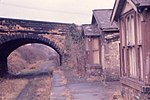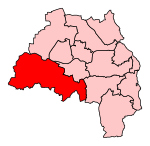Gibside
Country houses in Tyne and WearGrade II listed buildings in Tyne and WearNational Trust properties in Tyne and WearParks and open spaces in Tyne and WearSites of Special Scientific Interest in Tyne and Wear

Gibside is an estate in the Derwent Valley in North East England. It is between Rowlands Gill, in Tyne and Wear, and Burnopfield, in County Durham, and a few miles from Newcastle-upon-Tyne. Gibside was previously owned by the Bowes-Lyon family. It is now a National Trust property. Gibside Hall, the main house on the estate, is now a shell, although the property is most famous for its chapel. The stables, walled garden, Column to Liberty and Banqueting House are also intact.
Excerpt from the Wikipedia article Gibside (License: CC BY-SA 3.0, Authors, Images).Gibside
The Long Walk,
Geographical coordinates (GPS) Address Nearby Places Show on map
Geographical coordinates (GPS)
| Latitude | Longitude |
|---|---|
| N 54.9245 ° | E -1.7267 ° |
Address
Gibside Hall
The Long Walk
NE16 6BG , Lockhaugh
England, United Kingdom
Open on Google Maps



